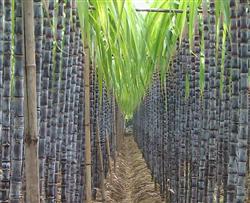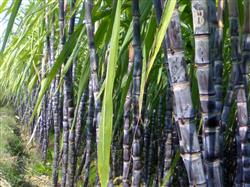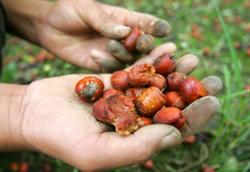Black sugarcane: how to control diseases and insect pests by planting black sugarcane?

How to control diseases and insect pests by planting black sugarcane? Please introduce the prevention and control methods of various diseases and insect pests black sugarcane, also known as fruit sugarcane (sugarcane), edible meat sugarcane. It belongs to the genus Gramineae. The origin is tropical and subtropical. High requirements for light, heat and water. Not resistant to cold, drought and shade, suitable for planting areas below 800 meters above sea level. It has thin skin, crisp stem, sweet juice, cool detoxification, thirst and hunger, rich nutrition and high yield. The economic benefit is good. However, black-skinned sugarcane is very vulnerable to diseases and insect pests in the process of planting black-skinned sugarcane, and the prevention and control of black-skinned sugarcane is mainly based on prevention and comprehensive control. First, disease control: sugarcane diseases mainly include pineapple disease at seedling stage, shoot rot and leaf wilt in the middle stage. 1. Sugarcane seed treatment: soak the seeds in 3% quicklime water for about 6 hours or soak the seeds in carbendazim 1000 times solution plus 98% Batan powder 1000 times solution for 10 minutes. In order to promote the robust growth of sugarcane plants, enhance resistance, and inhibit the onset of diseases. 2. In the early stage of the disease in the field, 3Mel was sprayed with 800-fold solution of chlorothalonil or 800-fold solution of methyl topiramate for 4 times. The whole plant was sprayed at an interval of 1 week. 3. Peel off the old leaves in time, and concentrate the peeled sugarcane leaves in a safe area to burn. Second, pest control: sugarcane insect pests are mainly sugarcane borer, followed by pink scale, woolly aphid, sugarcane turtle. 1. Agricultural prevention and control: mainly adopt fitness cultivation, reasonable close planting, scientific management and fertilization. Select sugarcane shoots with large, uniform, crack-free and wormhole-free shoots as seeds. The distance of planting ditch is 120 cm, the depth of ditch is more than 40 cm, the width of ditch bottom is 20 cm, and 20 buds are sown per meter. Ensure that the effective stem per mu is not less than 4500. During the growing period, the withered seedlings were removed in time, the withered shoots were burned, and the larvae in the stem were killed with injection or needle. 2. Physical control: make use of the phototaxis of adults and install frequency vibrating insecticidal lamps to trap and kill adults. 3. Chemical control: grasp the peak period of occurrence (March-April, June-July, September-October) and dynamic occurrence for control. The main results are as follows: (1) when sowing, 5 kg per mu of land is used to kill 5 kg of terbufos or 5 kg of Milol as toxic soil or fertilizer into the sowing ditch, and then cover the soil after planting. In the future, the same amount of fertilizer should be applied in combination with each soil cultivation. (2) pay attention to inspection during the growth period, choose 5% Regent 1000 times liquid or 98% Batan powder 800 times solution or 40% drill heart terin 2000 times solution to spray. Alternately, mix 40% aphid 1000 times solution or 50% aldicarb 2000 times solution or 48% Lexben 1500 times solution or 52% Nongdile 1000 culture solution with more than 45ml per mu. Third, the prevention and control of grass rodent damage: 300 times solution of du A mixture was used to control grass damage at seedling stage, and 150 times solution of glyphosate was used to control weeds on ditch ridges. 7/10000 sodium diphacinone bait was used to control rodent damage. Click for more sugarcane planting techniques click to get more fruit planting techniques
- Prev

What should black sugarcane continuous cropping pay attention to?
What should black sugarcane continuous cropping pay attention to? One of the main reasons for the low yield and poor quality of black-skinned sugarcane is that the soil lacks magnesium, silicon, calcium, zinc, boron, iron, molybdenum, manganese and other trace elements, resulting in insufficient supply of trace elements, resulting in poor growth of sugarcane.
- Next

Jujube management: how to manage the jujube fruit expansion period?
How to manage the expansion period of jujube fruit? Please introduce the management method after the jujube fruit enters the expansion period, a large amount of nutrients stored in the tree are consumed due to heavy vegetative growth and reproductive growth, and the nail mouth has just healed, which is the key period for the root system to rapidly absorb nutrients. So cause jujube tree potential is weak, lack of nutrition, resistance.
Related
- Moge, come on! The staff of the peasant association in the producing area of cantaloupe were frightened when the crowd gathered.
- Causes and Solutions of low Fruit setting rate of Apple
- Symptoms and control measures of passion fruit virus disease
- Fruit growing lesson: how do apple orchards keep high yields?
- Can you build orchards in the mountains? What are the pros and cons?
- How to manage the coloring period of Crisson grape?
- This paper introduces the processing technology of two kinds of fig products.
- How much is a month for retired teachers in rural areas by 2020?
- How can strawberry planting increase sugar content? We should pay attention to management in many aspects.
- What are the cultivation techniques on how to improve the yield of golden fruit?

